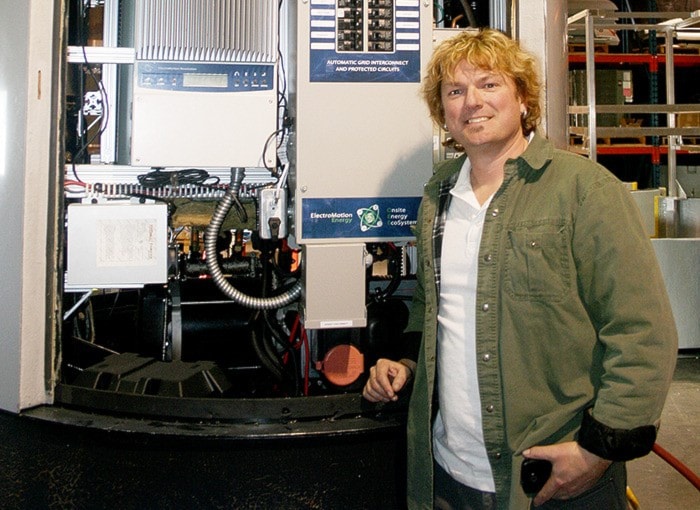Testing for a recently developed electrical power producing unit will soon begin now that 10 of the devices can be connected to the electrical power grid in Summerland.
On Monday evening, council authorized an agreement with ElectroMotion Energy to connect up to 10 of the Revolution power supply units at residences within Summerland.
The Revolution combines residential heating, cooling, hot water and backup electrical systems into one unit.
Surplus electricity is produced because of the efficiencies which result from the combined system. This electricity can be fed back into the electrical grid, thus reducing the amount of power FortisBC must supply for Summerland.
For the past two years, since installing the first Revolution unit at a Summerland home, Zachary has been promoting and refining the concept.
“I commend you for what you have done so far,” Coun. Lloyd Christopherson said.”I’m starting to understand some of the basics of it.”
Coun. Peter Waterman said there are exciting opportunities for Summerland as the unit gains popularity.
Municipal administrator Tom Day said this is the third time Zachary has presented his request to council, refining it each time. “I think there’s a real opportunity for this,” he said.
Units would reduce power use
Household electrical power producing units could greatly reduce the amount of electrical power the community needs to purchase from FortisBC, Jai Zachary says.
Zachary, the head of ElectroMotion Energy Corporation, said his company’s unit, the Revolution, not only saves energy for the householder but generates more than enough electricity to meet the householder’s needs.
“When we generate electricity at a home, that means we’re not asking for it from the grid,” he said.
The Revolution combines household heating, cooling, hot water and backup electrical systems into one unit.
Surplus electricity from the unit is fed back into the electrical grid, where it can supplement the power coming in from FortisBC.
Zachary said each Revolution unit in operation can produce as much power as three homes would require.
This means 10 Revolution units would generate the amount of electrical power used by 30 houses.
If 1,000 Revolution units were in place, enough power would be generated to meet the electrical needs of all single family homes in the community.
The municipality purchases electrical power from FortisBC and sells it to power consumers within the community.
Lorrie Coates, director of finance for the municipality said Summerland spent $6,713,900 on electricity purchases from FortisBC in 2012. From January to the end of September of this year, Summerland has spent $5,044,263 on electricity.
“It’s definitely a significant cost,” Coates said.
The first Revolution unit in Summerland was installed in the fall of 2011.
During a power outage the next year, the house continued to have electricity, even though other homes were in the dark for the day.
Zachary has since modified the design of the original unit.
One model, designed for use in the Arctic, can function in up to 2.4 metres of snow.
Zachary said he has received interest from the Northwest Territories government.
Testing of the unit is now needed to determine how it will work in real-life conditions.
“So far, our tests are very promising and encouraging,” Zachary said.
The testing will now take place in Summerland as permission has been given to have 10 Revolution units connected to the electrical grid.
